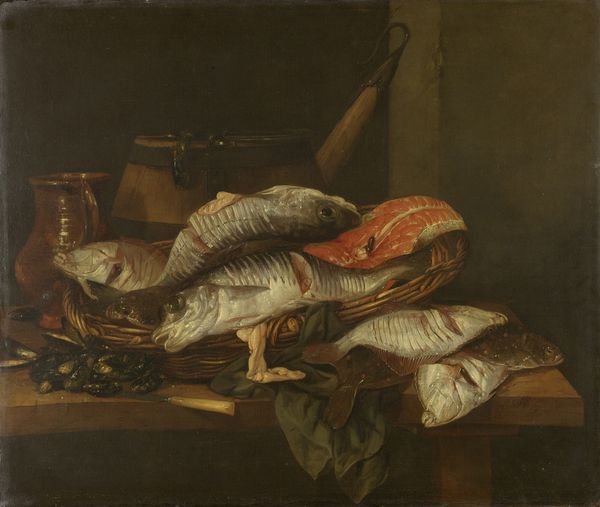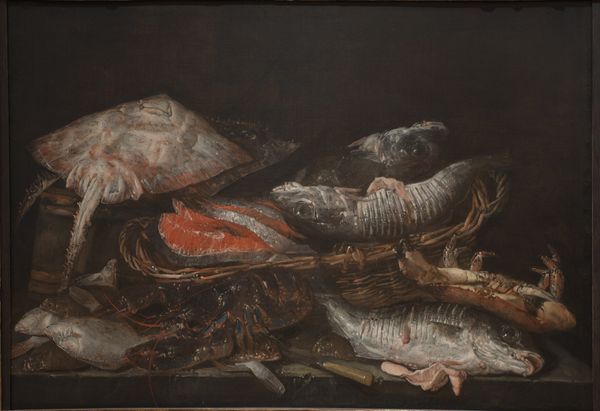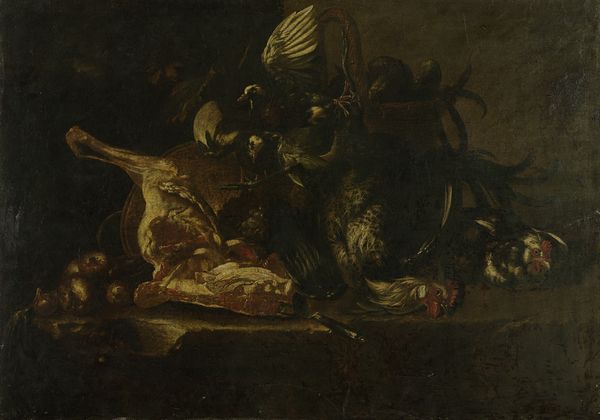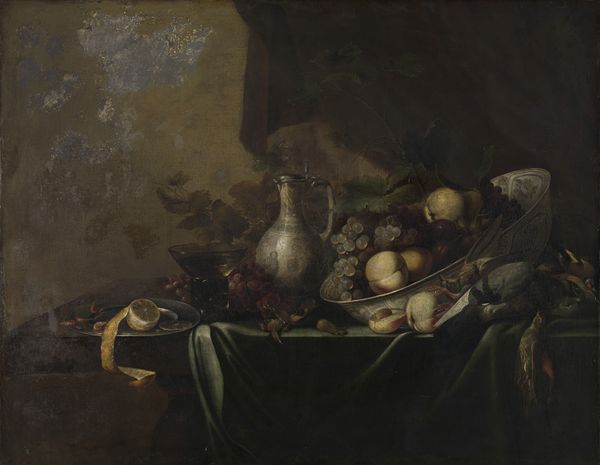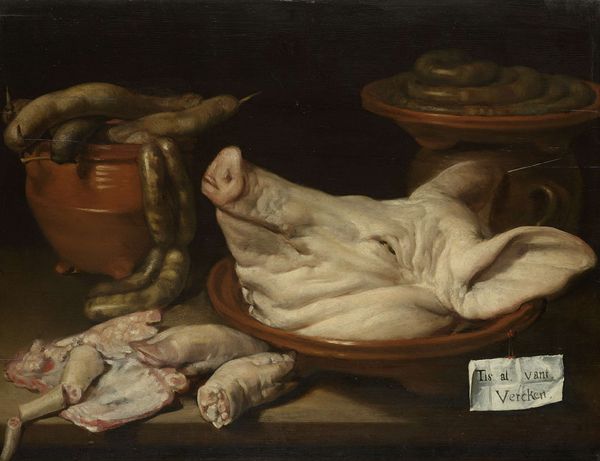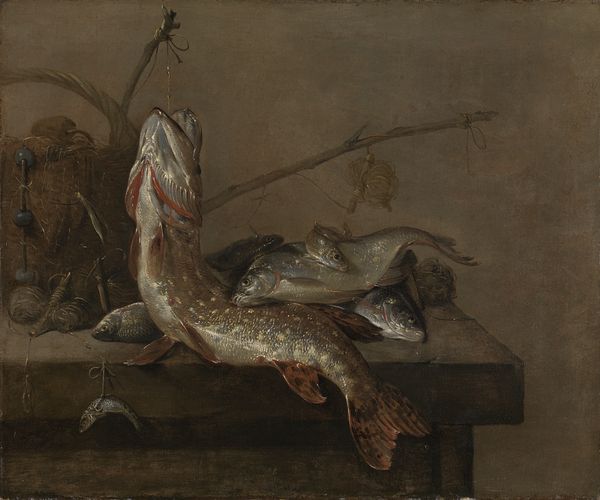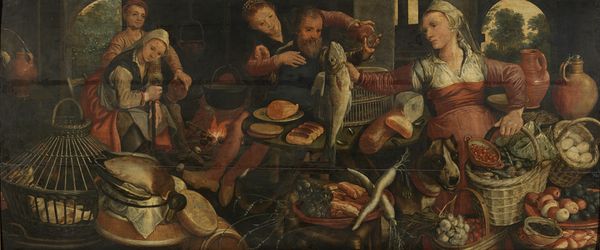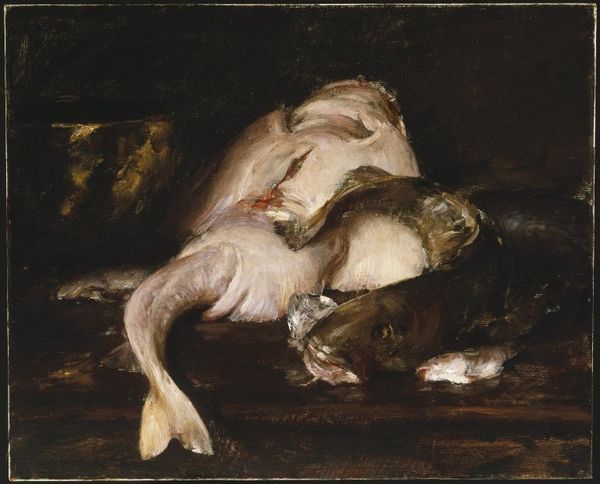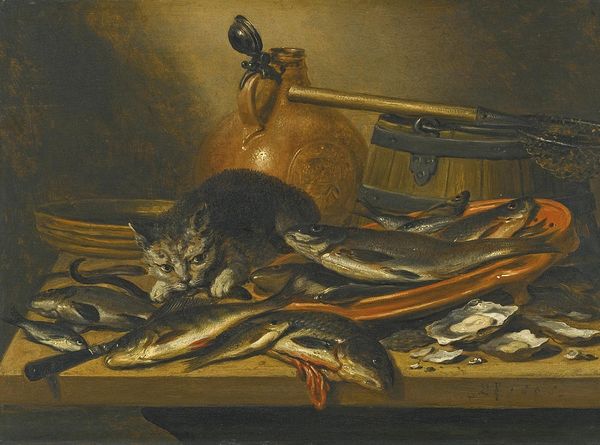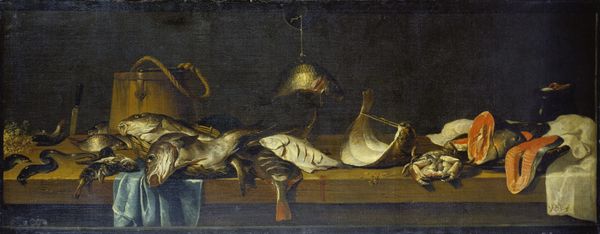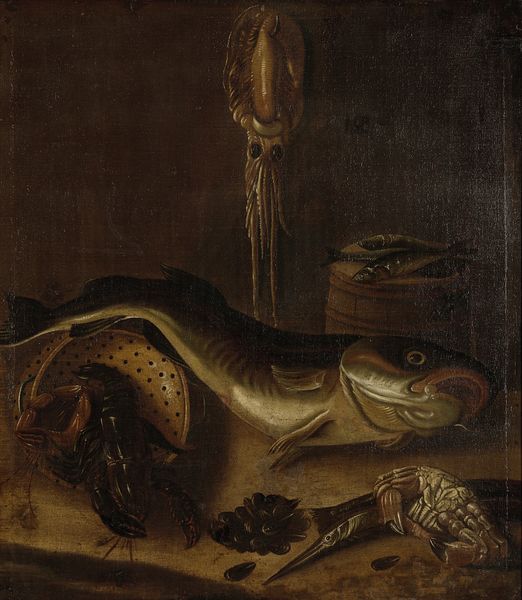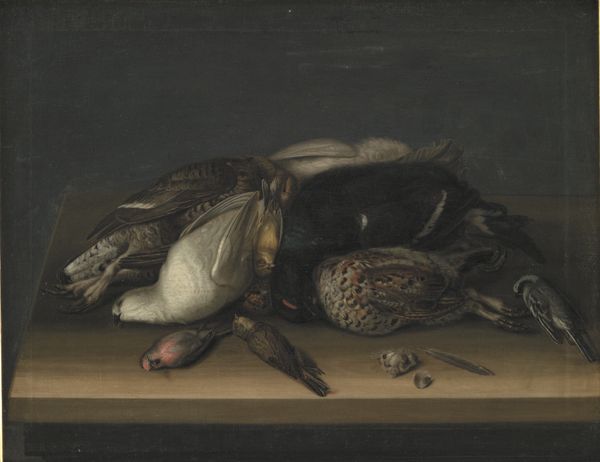
Still Life with Fish and a Lobster and Oysters on a Table nearby 1660
0:00
0:00
oil-paint
#
baroque
#
oil-paint
#
oil painting
#
genre-painting
Dimensions: support height 47.5 cm, support width 75.5 cm, outer size depth 4.5 cm
Copyright: Rijks Museum: Open Domain
Curator: This is Alexander Adriaenssen’s “Still Life with Fish and a Lobster and Oysters on a Table nearby,” painted around 1660. It currently resides in the Rijksmuseum. Editor: My immediate impression is the contrast—or lack thereof—between textures. The rigid wood of the table and the varying forms of fish... yet the artist manages to weave everything together into almost one homogenous surface. It has a strange feeling of both opulence and decay. Curator: Well, think about the society in which this still life would have been consumed. Adriaenssen was working in Antwerp, a major port city. The work speaks to an expanding access to commodities – spices, sugar, seafood from far away. Editor: The consumption angle is quite interesting. It's clearly meant to show luxury, but there's a sort of grotesque element to displaying the food in this manner. Was there perhaps a cautionary note to excess, typical in Baroque sensibilities? Curator: That's one angle. But don’t overlook how it portrays labor. The oysters and fish, sourced and prepared, represent significant human work behind their appearance on the table. Not only fishing, but transport, the making of dishes for service, and cooking. These all would have been specialist jobs by this date. Editor: Absolutely, but also it reminds us of how these paintings acted in society. Serving almost like advertisements for these goods. Reminding the consumer about their wealth. Curator: Consider also the painter’s labor, though! Adriaenssen himself participating in this new consumerist network through his artistic skills, producing valuable luxury goods to promote other luxury goods. Editor: It’s interesting that you put it like that! But you are right! The artist is both complicit with this social hierarchy, but perhaps commenting on it at the same time! What are your final thoughts about the artwork, regarding the artist's materials and overall process? Curator: Looking at the textures, I think the key takeaway here for me is that interplay between materiality and symbolism, it's where art speaks beyond itself. What's your read after considering that angle? Editor: After this quick tour, it comes to me that such paintings served as cultural mirrors. Adriaenssen’s table is both a representation and a promotion of a lifestyle that would not have been around just a hundred years before.
Comments
No comments
Be the first to comment and join the conversation on the ultimate creative platform.
